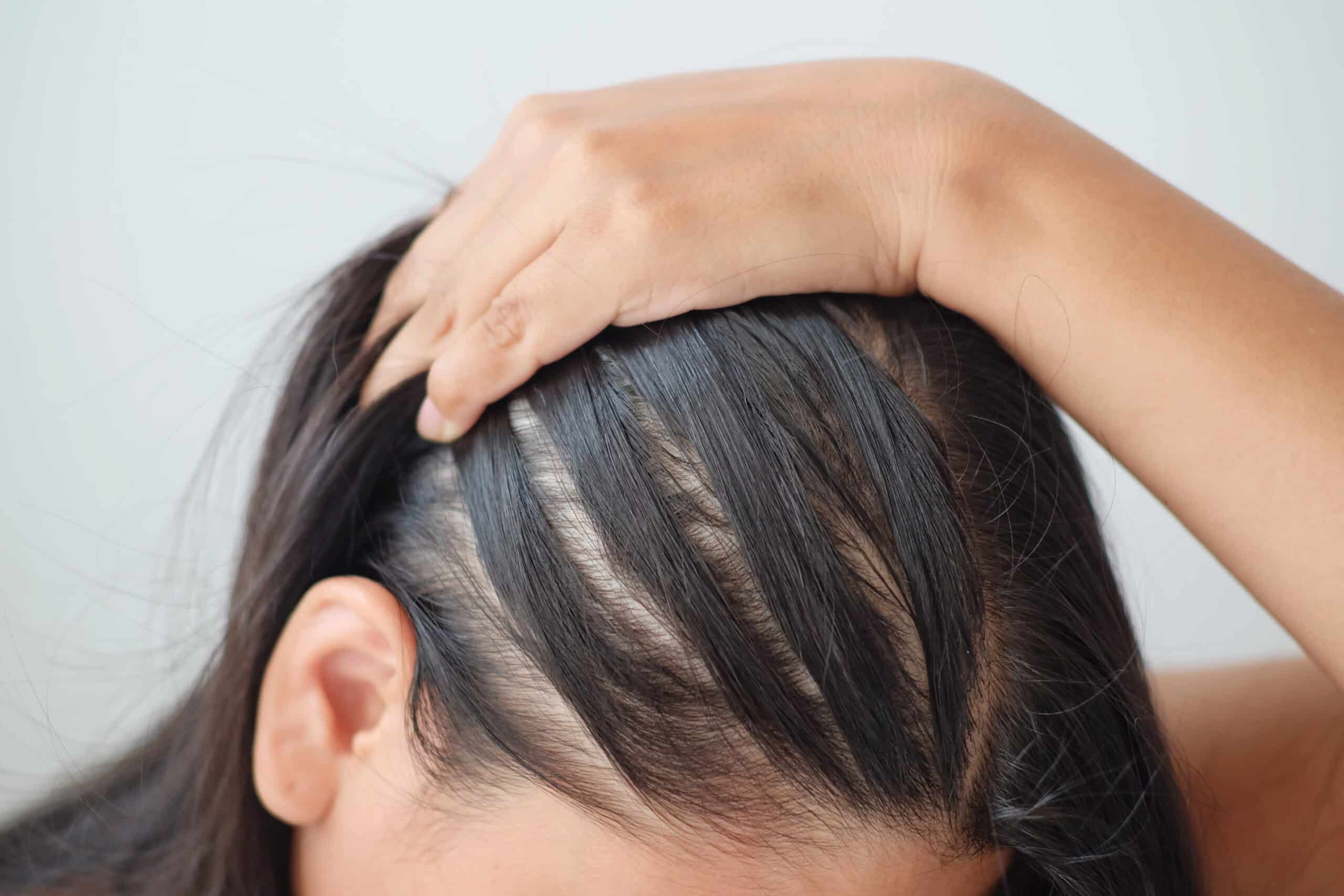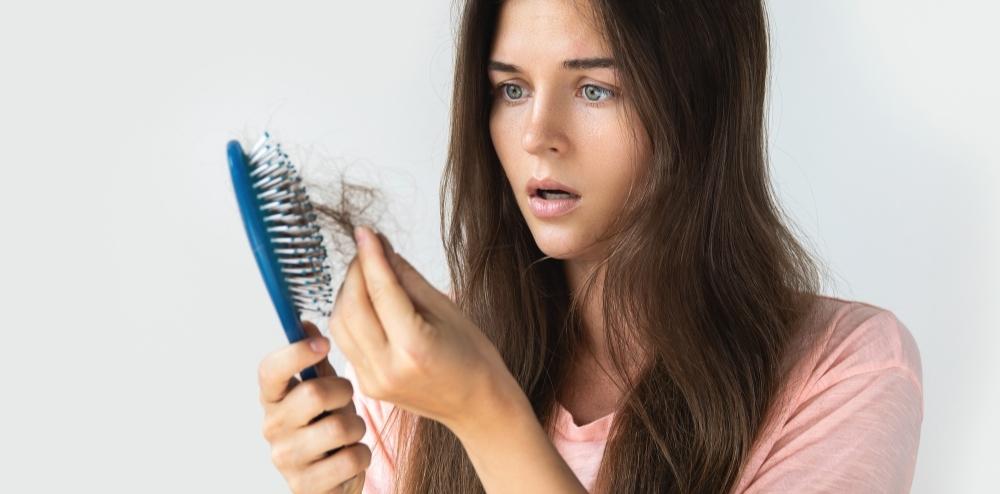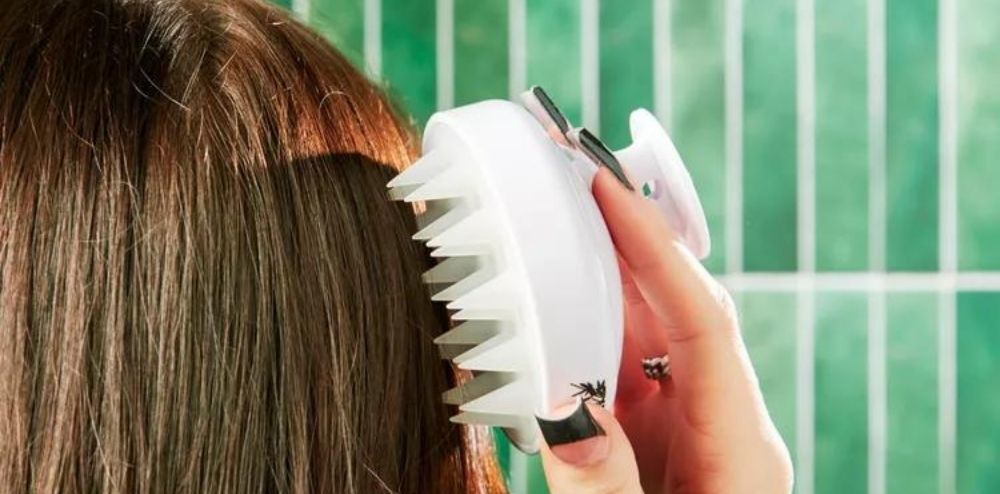Hair loss is a common concern among both men and women, but it is often considered more prevalent in men. However, women make up 40% of hair loss sufferers, and up to 50% of women may experience some degree of hair loss during their lifetime. The leading cause of hair loss in women is female pattern hair loss. Hair loss in women is mainly caused by psychological and hormonal changes, and it is essential to consult a healthcare professional or a dermatologist for an accurate diagnosis and appropriate treatment plan. This blog post will discuss the three most common types of hair loss in women, including their causes, and possible treatment options.

Women Hair Loss Causes
Hair loss in women is mainly caused by psychological and hormonal changes
Some other reasons are:
Anagen Effluvium
Anagen Effluvium is a type of hair loss that occurs during the anagen phase of the hair growth cycle, which is the phase when hair is actively growing. Here are some of the most common causes of Anagen Effluvium:
Chemotherapy: One of the most common causes of Anagen Effluvium is chemotherapy. Chemotherapy drugs are designed to kill rapidly dividing cells, including cancer cells, but they can also affect hair follicle cells, causing hair loss.
Radiation therapy: Radiation therapy to the scalp can also cause Anagen Effluvium.
Poisoning: Exposure to certain toxins, such as thallium, arsenic, and bismuth, can cause Anagen Effluvium.
Infection: Certain infections, such as fungal infections of the scalp, can cause Anagen Effluvium.
Anagen Effluvium can be a temporary or permanent condition depending on the cause. If Anagen Effluvium is caused by chemotherapy or radiation therapy, the hair usually grows back once the treatment is completed. However, if Anagen Effluvium is caused by an underlying medical condition or nutritional deficiency, it may require treatment to address the underlying cause.

Telogen Effluvium
Is a hair loss disorder. This is caused by stress, thyroid problems, gout medications, excess use of vitamin A birth control pills and menopause.
Telogen Effluvium is a type of hair loss that occurs during the telogen phase of the hair growth cycle, which is the resting phase when hair falls out naturally. Here are some of the most common causes of Telogen Effluvium:
Physical or emotional stress: Physical or emotional stress can disrupt the normal hair growth cycle and cause hair to enter the telogen phase prematurely.
Medications: Certain medications such as antidepressants, Anti-hypertensives, hormonal drugs, beta-blockers, and blood thinners can cause Telogen Effluvium.
Hormonal changes: Hormonal changes due to pregnancy, childbirth, menopause, or thyroid imbalances can cause Telogen Effluvium.
Nutritional deficiencies: A lack of certain vitamins and minerals, such as iron, biotin, and zinc, can also cause Telogen Effluvium.
Rapid weight loss: Rapid weight loss or a very low-calorie diet can lead to Telogen Effluvium.
Autoimmune diseases: Some autoimmune diseases, such as alopecia areata and lupus, can cause Telogen Effluvium.
Telogen Effluvium is a temporary condition and hair usually grows back within six months to a year once the underlying cause is addressed. Treatment options may include identifying and managing the underlying cause, such as reducing stress or treating nutritional deficiencies, or stopping the medication causing the hair loss. In some cases, a healthcare professional may recommend topical or oral medications to promote hair growth.
Androgenetic alopecia
This can also be called female pattern hair loss. This is the most common type of hair loss in women. Usually, hair thins on the top of the head and on the sides.
Is a common form of hair loss in women. It is caused by a combination of genetic and hormonal factors. Here are some of the main causes:

Genetics: Androgenetic alopecia is hereditary and often runs in families. If a woman’s family members, particularly her mother or father, have experienced hair loss, it increases her risk of developing the condition.
Hormones: Androgens, the male hormones that are present in both men and women, can contribute to hair loss. Women with androgenetic alopecia may have an increased sensitivity to androgens, which can cause the hair follicles to shrink, resulting in thinner hair or baldness.
Age: As women age, they may experience a decrease in hormone levels, including estrogen, which can contribute to hair loss.
Medical conditions: Certain medical conditions, such as thyroid disorders, polycystic ovary syndrome (PCOS), and autoimmune diseases can contribute to hair loss.
Medications: Certain medications, such as birth control pills can cause Androgenetic alopecia
Hairstyling practices: Certain hairstyles and hair treatments that pull on the hair, such as tight braids, weaves, and chemical treatments, can cause hair loss over time.
It is important to note that other factors, such as stress, nutritional deficiencies, and environmental factors, may also contribute to hair loss. If you are experiencing hair loss, it is recommended to consult with a healthcare professional to determine the underlying cause and develop a treatment plan.

Which women are more prone to hair loss?
Women of all ages and ethnicities can experience hair loss, but certain groups of women may be more prone to hair loss due to various factors. Here are some examples:
Women with a family history of hair loss: Androgenetic alopecia, the most common form of hair loss in women, is hereditary and can be passed down through families. Women with a family history of hair loss are more likely to experience hair loss themselves.
Women who have just given birth: Pregnancy and childbirth can cause hormonal changes in women that can lead to hair loss. During pregnancy, increased levels of estrogen can prolong the growth phase of the hair cycle, leading to thicker, fuller hair. However, after giving birth, estrogen levels drop, and hair follicles can enter the shedding phase. This can result in a type of hair loss called postpartum hair loss, which is a temporary condition that typically resolves on its own within a few months.
Menopausal and postmenopausal women: As women go through menopause and experience a decrease in estrogen levels, they may be more prone to hair loss. This is because estrogen plays a role in hair growth, and a decline in estrogen levels can lead to hair thinning and loss.
Women with medical conditions: Certain medical conditions, such as thyroid disorders, autoimmune diseases, and polycystic ovary syndrome (PCOS), can contribute to hair loss in women.
Women undergoing cancer treatment: Chemotherapy and radiation therapy can cause hair loss as a side effect.
Women who wear tight hairstyles: Tight hairstyles that pull on the hair, such as tight braids, weaves, and ponytails, can cause hair loss over time.
Hair loss treatment options for women
Healthy diet and certain supplements may also be beneficial in promoting hair health and preventing hair loss in women. Here are some dietary and supplement recommendations:

Protein: Hair is primarily made up of protein, so consuming an adequate amount of protein in the diet is important for promoting healthy hair growth. Good sources of protein include lean meats, fish, eggs, nuts, and legumes.
Iron: Iron deficiency can contribute to hair loss, so consuming adequate amounts of iron in the diet is important for maintaining healthy hair. Good sources of iron include red meat, poultry, fish, beans, and leafy green vegetables.
Biotin: Biotin is a B-vitamin that is important for hair and nail health. Some studies suggest that taking biotin supplements may help improve hair thickness and reduce hair shedding.
Vitamin D: Vitamin D is important for hair health, and deficiency has been associated with hair loss. Getting adequate sunlight and consuming vitamin D-rich foods, such as fatty fish and fortified dairy products, can help ensure adequate vitamin D intake.
Omega-3 fatty acids: Omega-3 fatty acids are important for maintaining healthy hair, and consuming foods rich in omega-3s, such as fatty fish and flaxseed, may help promote hair growth and prevent hair loss.
It’s important to note that while dietary changes and supplements may be helpful in promoting hair health, they may not be effective for all types of hair loss.

The treatment options for hair loss in women depend on the underlying cause and the severity of the condition. Here are some possible treatment options:
Minoxidil: Minoxidil is a topical medication that can be applied to the scalp to help promote hair growth. It is available over-the-counter and has been shown to be effective in treating androgenetic alopecia in women.
Finasteride: Finasteride is an oral medication that is FDA-approved for the treatment of androgenetic alopecia in men. While it is not FDA-approved for use in women, some healthcare professionals may prescribe it off-label for female hair loss.
Hormone therapy: Hormone therapy, such as oral contraceptives and hormone replacement therapy (HRT), may be recommended for women with hair loss due to hormonal imbalances.
Changes in hairstyling practices: For women with hair loss due to tight hairstyles or other hair styling practices, changing these practices can help prevent further hair loss.
Hair transplantation: Hair transplantation involves moving hair follicles from a donor site to the balding area. It is typically recommended for women with more advanced hair loss. Hair transplant is the only long term solution for scarring hair loss. If you are considering getting a hair transplant operation in Antalya contact us for more information about the operation.
In conclusion, hair loss in women can be caused by a variety of factors, including psychological and hormonal changes, genetic predisposition, medical conditions, medications, and environmental factors. Anagen Effluvium and Telogen Effluvium are temporary conditions that can usually be resolved once the underlying cause is addressed, while Androgenetic alopecia may require ongoing management to slow or stop hair loss. It is important for women experiencing hair loss to consult with a healthcare professional to determine the underlying cause and develop an appropriate treatment plan. While hair loss can be a challenging experience, there are a variety of options available to help manage and address this condition.








